The Legend of Zelda: Link’s Awakening is the perfect follow-up to Breath of the Wild’s franchise-busting experiment in open world, free choice gameplay. It’s also a testament to the timelessness of excellent game design and the power of nostalgia.
There’s not a whole lot one can say about the plot of Link’s Awakening without spoiling things, since it adopts a more unusual narrative pattern for the series.
After defeating Ganon in one version of the series’ notoriously complicated timelines, Link sets off for new lands outside Hyrule. The problem is, his rather flimsy vessel gets hit by lightning, and he ends up unconscious on an unknown beach.
That somewhere is Koholint Island. It’s an odd place where animals talk and live side-by-side with humans. There’s an egg at the top of the island’s biggest mountain, and a mysterious girl called Marin, who looks an awful lot like Princess Zelda, takes an interest in Link’s wellbeing.
You’ll piece together more of Koholint’s past and present as you journey around the island seeking out its eight mysterious ruins (i.e. dungeons), defeat the Nightmares inside, and obtain the Instruments of the Sirens.
The game’s exploration structure is classic Zelda, and the original Link’s Awakening is often seen as the game that cemented it for years to come, after it first debuted in Link to the Past.
But the loose story with a central plot twist is unique to this game and gives it so much character.
Zelda II was the series’ first experiment in doing something different, back when making the second game different was almost a requirement. Yet Link’s Awakening is where the spirit of experiment and innovation first shone through, making it memorable for more than just being the weird stepchild.
A big part of its character is because that destiny of yours involves a not entirely unexpected, though still gut-wrenching plot twist that completely reshapes how you approach the game from then on, but you won’t learn about that until much later in your journey.
Meet the Islanders

The general story structure up to that point might seem a bit bland by modern standards. However, what really makes Link’s Awakening stand out — and makes that eventual twist dig in even further — is its characters.
Not even Breath of the Wild or Majora’s Mask include such a varied cast of strong personalities and downright bizarre scenarios.
The village dog lady keeps bloodthirsty but fashion-conscious Chain Chomps for pets. There’s a starving alligator who’s also a banana salesman. Old Man Ulrira won’t talk in person, but he’s Koholint’s version of Dear Abby, and the goat (ghost?) writer Christine sends letters to her beloved Mr. Write but won’t reveal she’s a goat.
It’s one of the only games in the series where every personality stands out and contributes something to the game, even if it’s just worldbuilding, which is more important than ever in this entry.
What’s especially impressive in Link’s Awakening for the Switch is that the game’s core hasn’t changed from the original Game Boy version, and yet it’s still as engaging as ever before.
The dialogue and scenarios are helped along by some modern touches that make them more dynamic and boost engagement. Text boxes are no longer limited to three or five words at a time, so it’s a lot easier to get the spirit behind the message. Delivery is also improved by adorable and expressive character models, each of which gets its own set of sound bytes that add even more personality.
It’s the best next step for the series after BotW. In that entry, Hyrule itself is arguably the main character. Take that away and return to something like Ocarina of Time or Twilight Princess, where interesting characters are mostly one-offs, and it’d be very easy for the game to feel flat.
Old Feels Surprisingly New
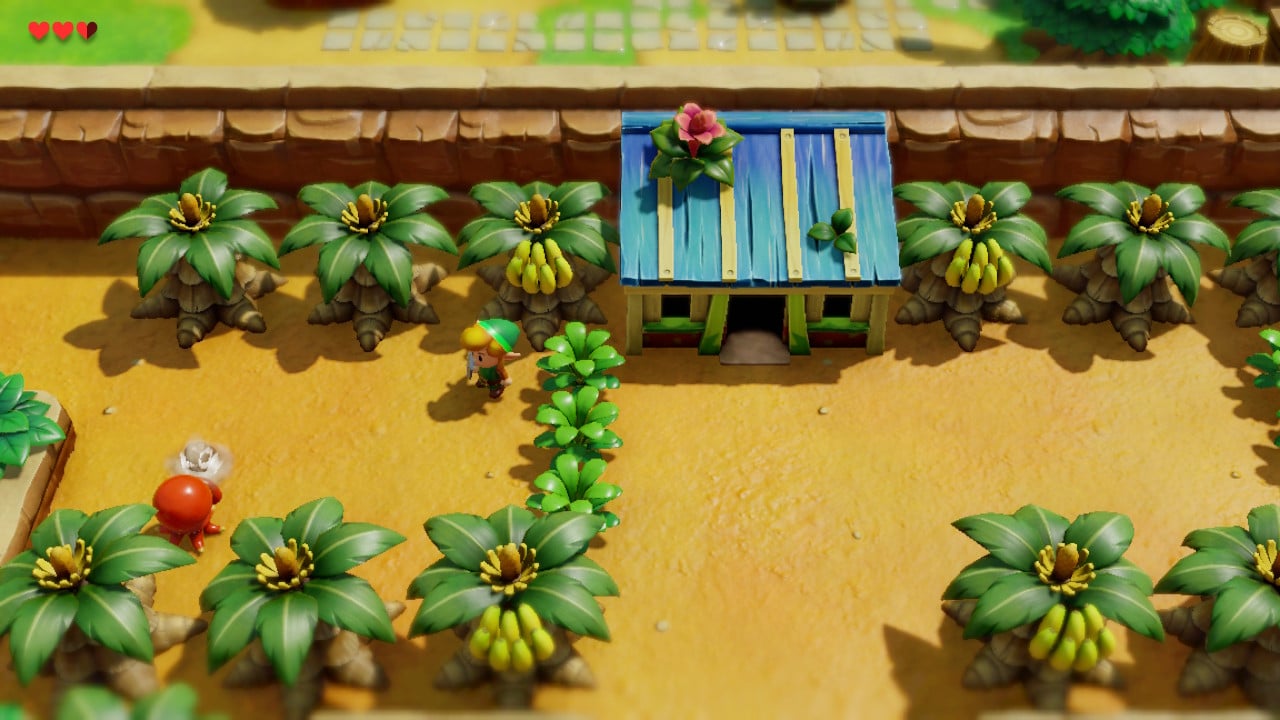
Gameplay in Link’s Awakening is classic Zelda with a bit of a twist.
For first-timers, it might seem too linear since there’s no flexibility in the game’s overall progression; you have to get to Point C from Point A via Thing B, and you have access new tools in the order the game wants you to.
However, the game is surprisingly open despite that strict structure. For example, after getting the Power Bracelet from the second dungeon, a huge portion of Koholint Island opens up, and there’s nothing stopping you from exploring it.
And it’s worth taking the time to look around. Link to the Past offers a big world, but despite originating on more limited hardware, Link’s Awakening feels bigger, with more things to do, see, and uncover.
There’s practically no unused space on Koholint Island, whether it’s a place to uncover a Secret Seashell, a cave hiding a new Heart Piece, or the next path you need to unblock.
There are still places you can’t go until you learn to swim and get a certain other item, and you won’t be able to access dungeons out of order, but you can go almost anywhere you want in between — as long as you can figure out the route.
It turns the game into a puzzle within a puzzle, with everything falling satisfactorily into place the further you progress.
Toys to Life
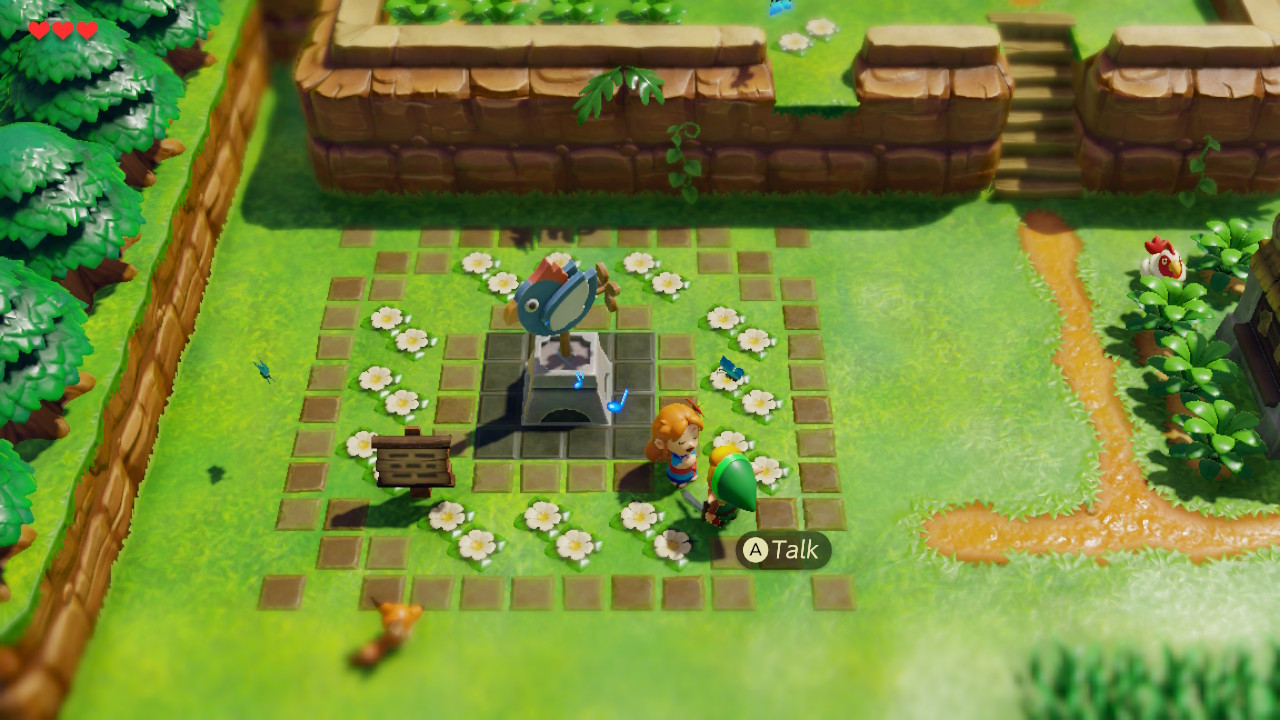
Link’s Awakening uses a delightful mix of toybox style characters in diorama settings and hyper-detailed 2.5D environments to create something that surpasses even Octopath Traveler in innovation and looks.
It’s the little touches that really stand out, though.
Unlike the original, characters are capable of facial expressions, too, which adds a charming touch of nuance to the game.
Because of the Switch’s hardware, water sparkles while flames shine and look realistic. The Keese’s glowing eyes challenge you from the darkness, and a subtle blue tint washes over the screen when you’re near the ocean.
The world isn’t divided into a grid map anymore, either. Moving from one place to the next no longer requires transitions. That change, however, comes at the cost of framerate stability. FPS drops mostly occur where screen divides used to be, among some other areas unconnected to the old divides. Some spots always stutter, while others sometimes won’t.
While these hiccups aren’t game-breaking, nor do they make your in-game death more likely, it is a shame the lovely aesthetic has to be marred by these issues.
Respect the Past, Envision the Future
The Soundtrack
What isn’t marred is the soundtrack. Full-bodied, subtle, and entirely appropriate in all contexts, the real draw is how it expertly pays homage to the original while using nostalgia as a springboard to do something amazing.
The original chip tunes were fine for their time, but there were basically two sounds: silence and BEEP. Here, however, every song is beautifully re-imagined with modernity while being painted with the undertones of emotional nostalgia.
In almost every facet, it’s an incredibly effective soundtrack adding even more life to a vibrant remake.
Dungeon Crawling

Dungeons are a bit on the simple side overall. Most of them are fairly short by series standards, though that isn’t a bad thing considering this is a portable game remade on portable hardware. They sit in a comfortable position between BotW‘s mini-puzzle Shrines and the lengthier, more complex dungeons of games like The Wind Waker or Twilight Princess.
Rather than having you solve puzzles spanning multiple stories or relying on more complicated movement-based puzzles, you’ll piece together the right path much in the same way you do in the overworld. Clearing out one part of the dungeon always gives you the necessary keys tools to open previousl-closed areas.
Those with fond memories of the original will probably be more likely to overlook their simplicity here. But it’s still a nice cleanser after spending over 40 hours dealing with 100+ Shrines in BotW.
Dampe, Dungeon Master
The Chamber Dungeon mechanic is the only completely new addition to Link’s Awakening, and it’s a fun one, if more limited than it should be.
Eventually, you can visit Dampe the grave keeper in his home, and he helps you put together mini-dungeons using tablets on his special worktable.
He’ll teach you the basics, then set out a series of challenges for you to complete. You have to meet his requirements and create a feasible dungeon with no loose ends. It’s an interesting set of brain teasers, and finally landing on an ideal layout is very satisfying.
Playing through them is not, though. Most of the tablets are rooms from dungeons you’ve already conquered. Even though piecing together rooms from random different dungeons does keep things fresh, it’s just not as compelling as actually piecing the layout together.
Pros:
- Tightly-knit narrative and gameplay scenarios
- Surprising amount of freedom within a linear system
- World stuffed full of secrets
- Engaging characters
- Expertly pays homage to the original, while updating as needed
- Innovative and highly appealing graphics direction
- Fantastic soundtrack
Cons:
- Not much (read: hardly any) new material
- Might seem too simple for first-timers
The 1993 version of The Legend of Zelda: Link’s Awakening is a masterpiece — and its 2019 remake is one, too.
The time that’s passed since experiencing Link’s Awakening in its original form has helped showcase how well the game has aged, as well as where it fits in with the series and gaming overall.
It’s the best entry after Breath of the Wild to keep the series fresh while something completely new bubbles away. It’s a strong testament to the power of caring, thoughtful design.
Even a 26-year-old games can be made new again with a little love.

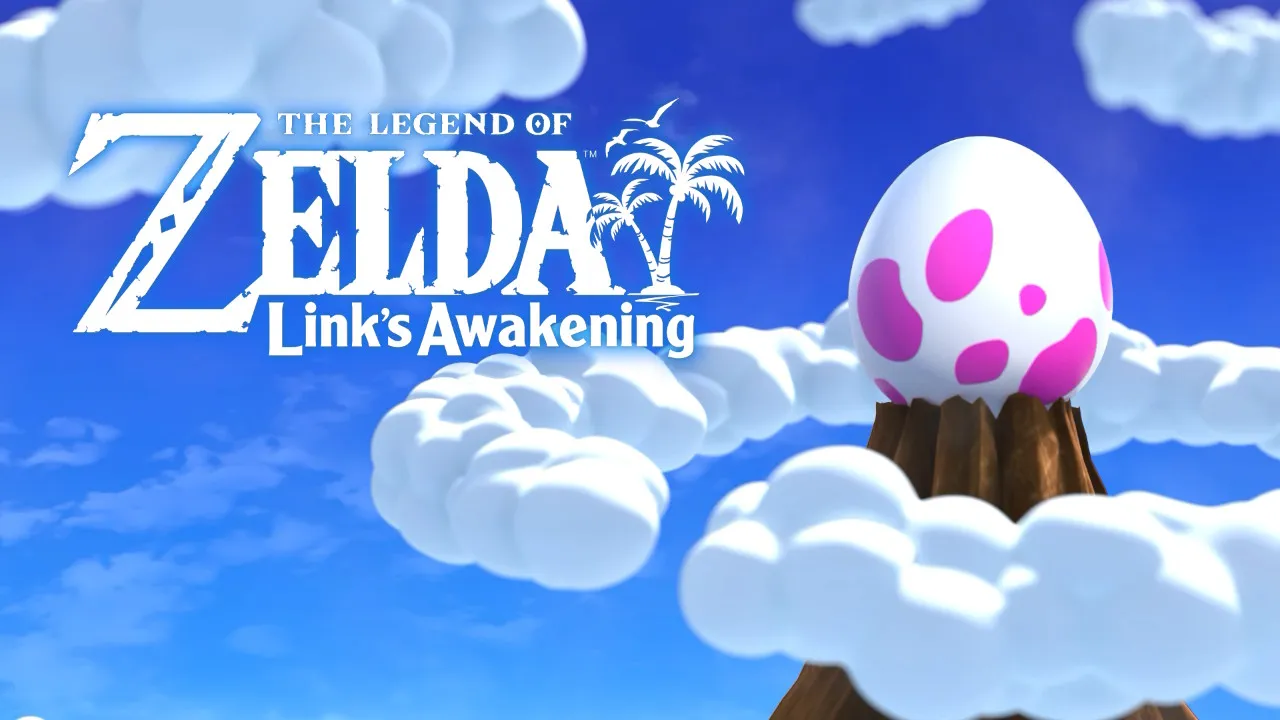
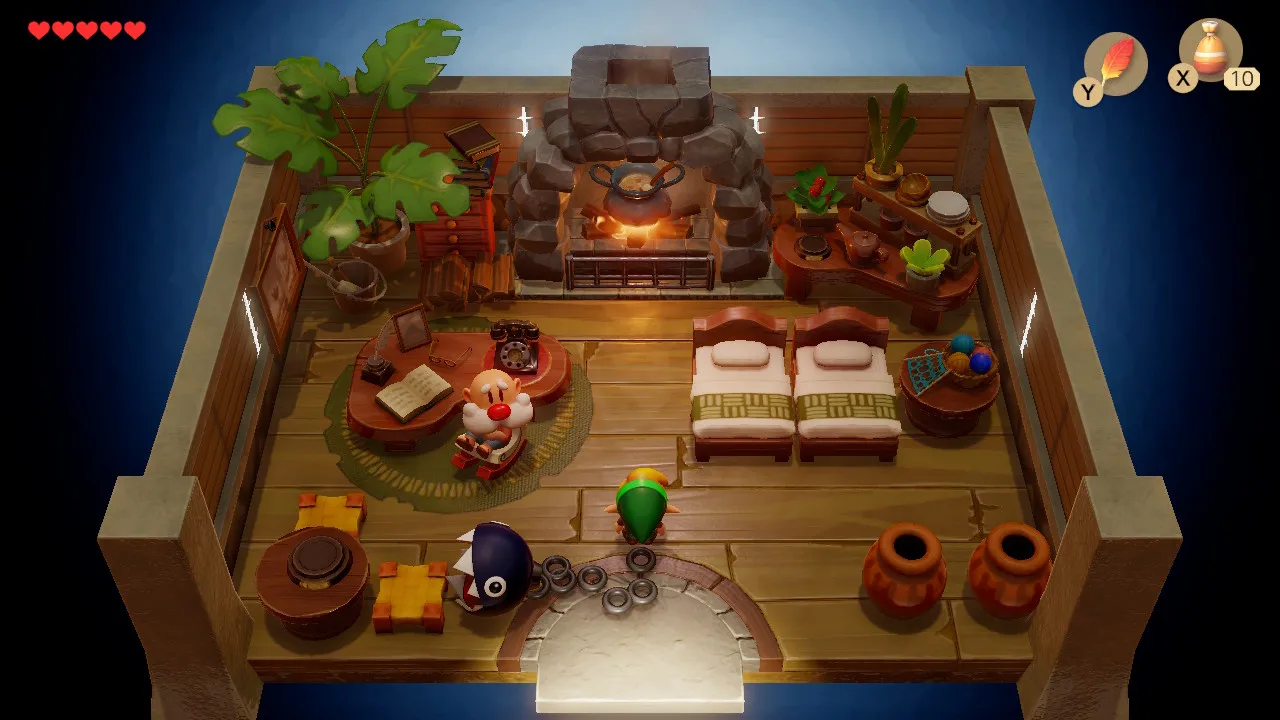
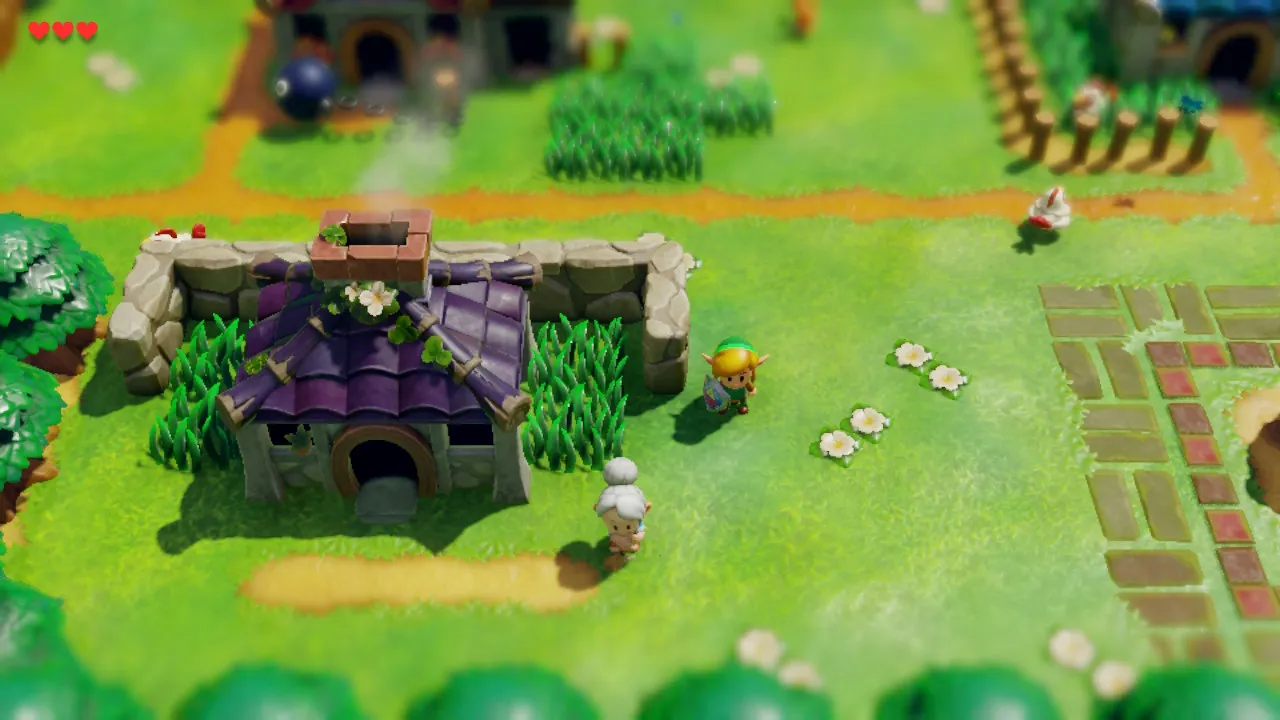





Published: Sep 24, 2019 02:31 pm